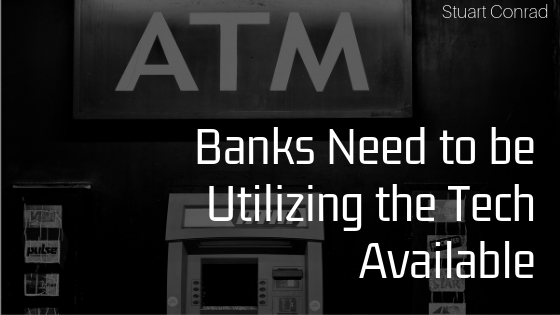Technology has been evolving since the beginning of time; although, one could argue that the pace of that evolution has accelerated dramatically over the last hundred years. Over this timeframe, we have seen almost every industry find ways to appeal to the modern consumer by implementing more and more innovative uses for technology into their services. While banking has done well by embracing mobile apps and implementing compatibility with services like Apple Pay, there are still a lot of ways that the traditional banking system could be leveraging available technology to add to the quality of services it offers its customers. Here are some types of technology that is not out-of-reach for the traditional bank.
Changes to ATMs
It has been many years since the industry has made fundamental changes to ATMs across the country with respect to the way that they dispense money. In many other countries, measures have been implemented to make the ATM experience more secure for consumers; keeping their money safe and reducing the overall risk of hacking. This includes technology like the use of biometric data using either a fingerprint or a scan of the iris. Another option for leveraging technology with ATMs would be the utilization of contactless payment for ATMs. By contactless payment, I am referring to the ability of two devices to communicate without actually touching or inserting a card. Data could be communicated by just being in close proximity. This would reduce the time needed to complete transactions, eliminate having to slide or insert a card, and add additional security levels to the ATM process. We are seeing more and more uses of contactless payment in other industries as it is being relied on as a more convenient and secure way to conduct transactions. The neighborhood ATM should be the next to convert.
Automated Employees
We’ve talked about robotic process automation in a previous post and how it will affect jobs in the financial sector. This technology will also prove to be invaluable to banking institutions. Similar to other financial positions, bank employees are often completing analytical work that could be easily optimized and completed through the use of RPA, or robotic process automation. There are many potential benefits of RPA, including adding efficiency to the banking process and reducing the time needed to complete a banking function. Not only does implementing RPA decrease the risk of human error but it also helps financial institutions stay on top of compliance regulations and handle their data more effectively.
Wearable Tech
Witnessing the evolution of technology and its impact on other industries, it is safe to say that the traditional banking experience will soon be a way of the past. Mobile banking apps, virtual wallets, and robo-advisors are all showing us how consumers desire the opportunity for intuitive and convenient banking solutions. Another way that banks will, and should, continue to adapt is by leveraging the increasing number of wearable tech options to their advantage. For example, smartwatches are not rare anymore – they are incredibly prevalent in today’s society. Leveraging this technology will help banks to serve their customers better and help tellers potentially do their jobs more effectively. Similar to contactless payment, the opportunity exists to leverage the ability to share data and communicate with components worn by the consumer.
The Cloud
More recently, the implementation of cloud-computing in industry is becoming the standard, rather than the exception, and this is also the case for the banking industry. Utilizing cloud-computing rather than relying only on traditional IT can provide a myriad of benefits. Leveraging the cloud can help institutions to better maintain compliance, cybersecurity, data storage and safety, and overall efficiency. Moving core functions to the cloud platform will help to push the banks forward towards more successful innovation.

